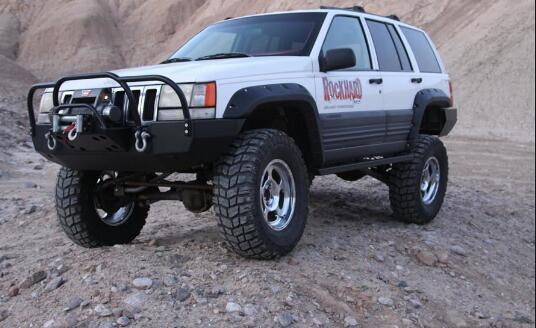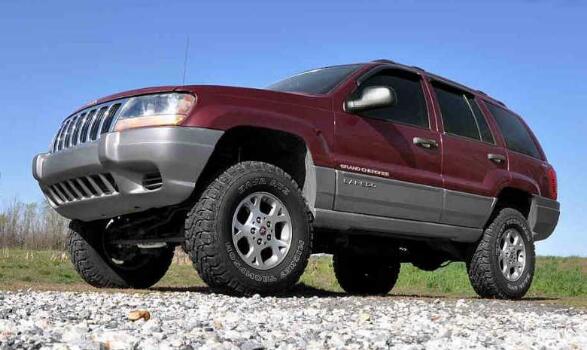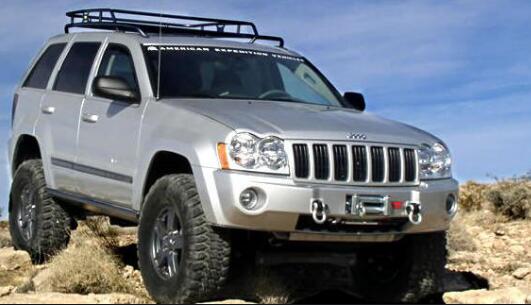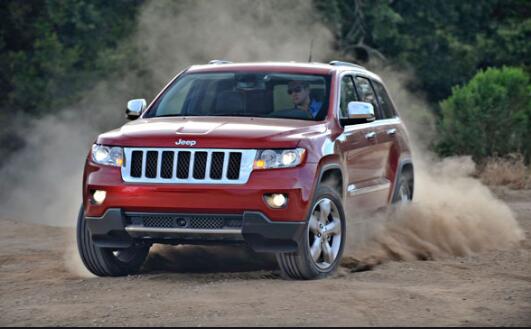If you ask a connoisseur what the most representative model of Jeep is, it will undoubtedly indicate that he, but is not the only one. Another of the models is the Cherokee, one of the first SUVs in history (with a self-supporting body, maintaining a good off-road commitment), which has been on the market since 1974, nothing less. His success was such that with him, the brand decided to enter the segment with the protagonist of this story, the Jeep Grand Cherokee.
With the Grand Cherokee, launched in 1992, the brand intended to repeat a play that it had made decades ago when it had combined the sale of Jeep Wagoneer (launched in 1963 as a luxury version of the 1946 Willys Wagon) with that of the still more luxurious Grand Wagoneer
The first unit left the Jefferson North Assembly Plant in Detroit on January 14, 1992, after being presented a week earlier in the Hall par excellence of North America, after a spectacular appearance: it went through a glass window of the Detroit Cobo Convention Center. That Michigan state plant opened in 1989 has not stopped manufacturing it since that day, throughout the four generations that we now review:
Jeep Grand Cherokee ZJ: 1993-1998
The first generation of the Grand Cherokee which did not design is the most easily differentiable. For its square shapes highlighted with also rectangular optics and the lower part in plastic, as a body protector and gold details in some versions.
Its engine was a huge 5.9 gasoline, which had manual transmission until 1994, the year in which it eliminated due to its low demand. From then on, it could only be chosen with four-speed automatic transmission in the 2WD and 4WD variants. In this sense, it had the possibility of having three different all-wheel-drive systems, among which the Quadra-Trac stood out to maintain the legendary tradition of
It could be very luxurious, with leather seats, adjustable electric front seats, temperature control, keyless entry, and introduced some innovation, as it was the first SUV equipped with a driver’s side airbag. Also, the first Grand Cherokee was manufactured using 90% recycled materials. It reached the magical figure of 1,000,000 vehicles sold in just four years since its launch.

Jeep Grand Cherokee WJ: 1999-2004
This second-generation was introduced in 1998 and included among its features the new Quadra-Drive transfer case: a new concept in four-wheel-drive systems, which incorporated a progressive and velocity-sensitive torque transmission coupling. The system marked the first use in the industry of Vari-Lok axles that mounted progressive and velocity-sensitive torque transmission differentials on both front and rear axles.
The combination of the Quadra-Trac II and the Vari-Lok provided the revolutionary Quadra-Drive system, which could keep the vehicle moving even if only one wheel had minimal traction … and without the driver having to intervene at all. A new suspension scheme also made driving on the road smoother, as well as having lighter and more efficient engines.
This Grand Cherokee shared only 127 parts with its predecessor. The interiors were also completely redesigned, with wider doors. In the higher-end models, you found then unusual elements, such as the dual-zone air conditioner and a 10-CD charger with the Infinity audio package.

Jeep Grand Cherokee WK: 2005-2010
The third generation emphasized power and luxury. It introduced Quadra-Drive II technology and a DVD player in the back seat. In 2007, it was introduced in Europe and received five stars in the Euro NCAP safety tests. A year later, the SUV underwent minor “cosmetic surgery,” with changes in the mechanical range.
In the engineering section, he introduced three new permanent four-wheel-drive systems, two new transfer boxes, a new independent front suspension, a rack, and pinion steering and a new five-speed gearbox. Highlight the arrival of the powerful 5.7-liter HEMI V-8 engine with the MDS system (Multi-Displacement System), which deactivates four cylinders slowly if all the power of the V8 is not needed.

Jeep Grand Cherokee WK: 2011-2016
The fourth-generation went on sale in the United States. Square optics abandoned by others that gave it a more modern image, but the shapes and volumes of its characteristic bodywork were maintained.
Much more radical was the change in the interior, which gained details in leather and wood, while new technologies arrived, such as Bluetooth connectivity and the UConnect system. Of course, there was no lack of a system to improve motor skills outside the asphalt, in this case, with the Selec-Terrain system that allows the driver to select between several driving modes: Automatic, Sports, Snow, Sand / Mud, and Rock.
But the big news was the arrival of the, with a 6.4-liter Hemi V8 engine that delivers 468 horsepower and 630 Nm of torque. It is capable of accelerating from 0 to 100 km / h in 5 seconds and that the speedometer needle reaches 257 km / h. A pinch of sportsmanship to a model could have Quadra-Lift air suspension, Jeep Selec-Terrain, and Selec-Track traction control system and luxury with a new level of more exclusive finish, called Summit.
This last update stands out because two variants joined the range. On the one hand, the version most capable of going out of the asphalt, and on the other, the most powerful SUV on the market at the time of launch, with a supercharged 6.2-liter V8 engine with 717 hp. All engines mounted with an eight-speed automatic transmission.

